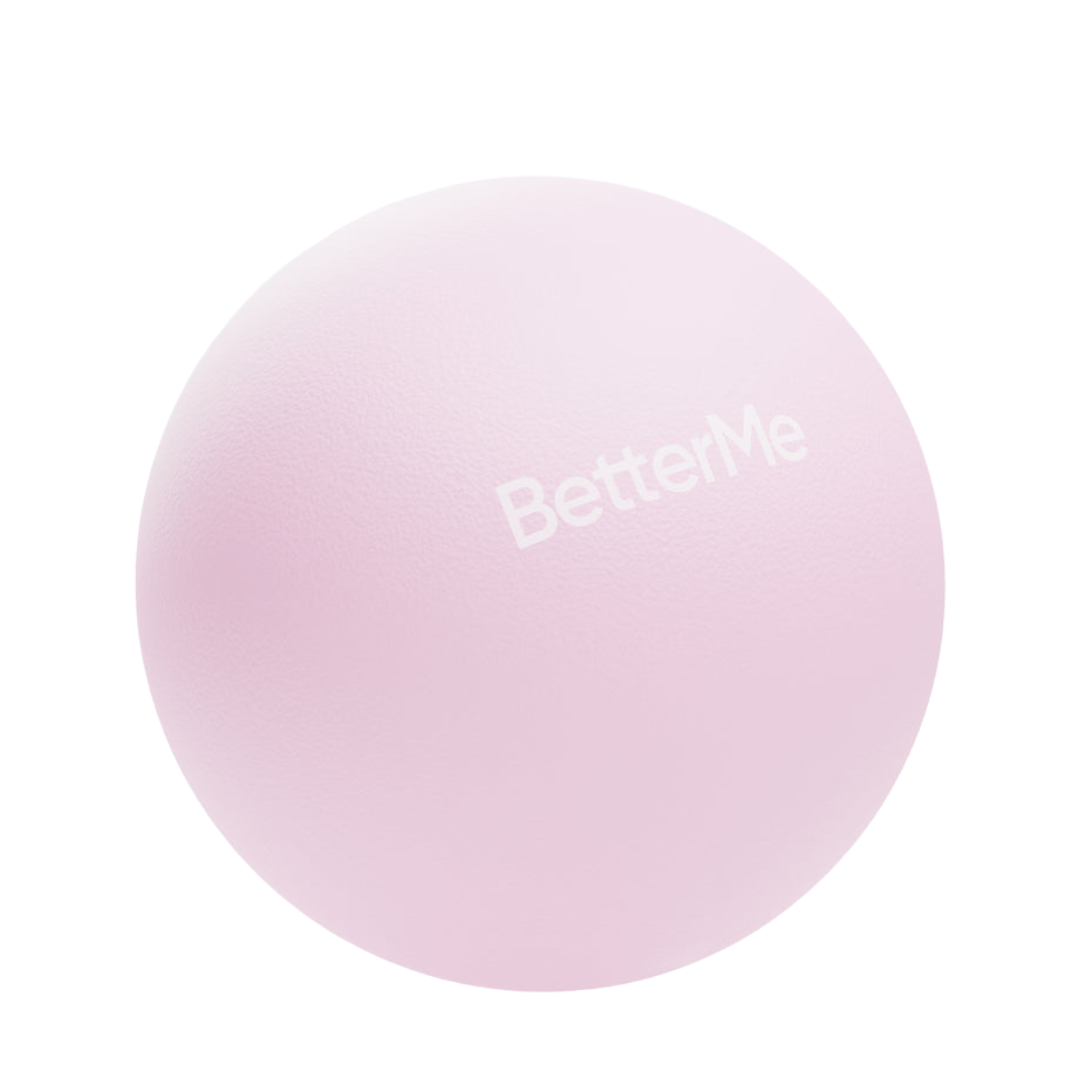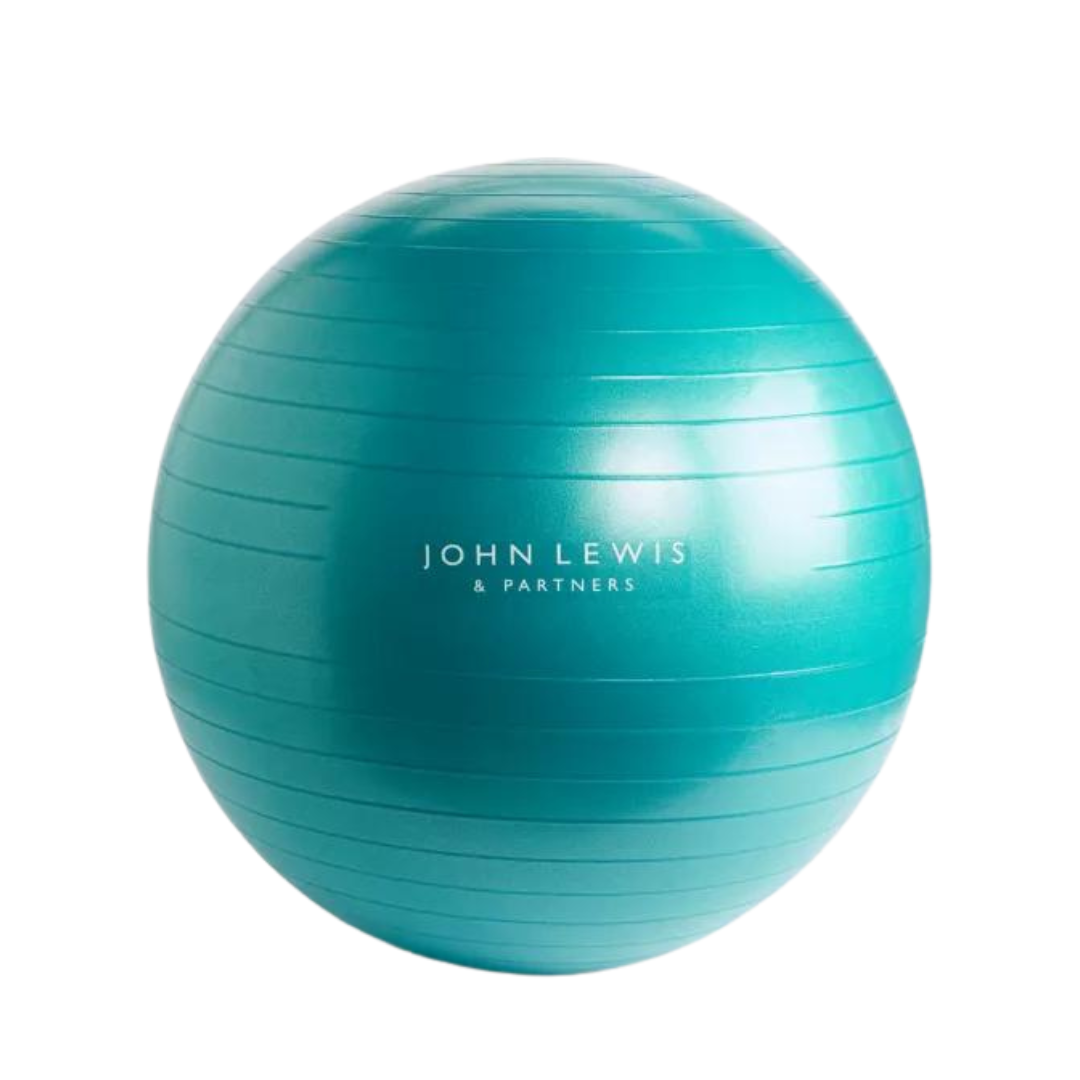I used a Pilates ball for three weeks and honestly? My glutes have never felt stronger
What's not to love?
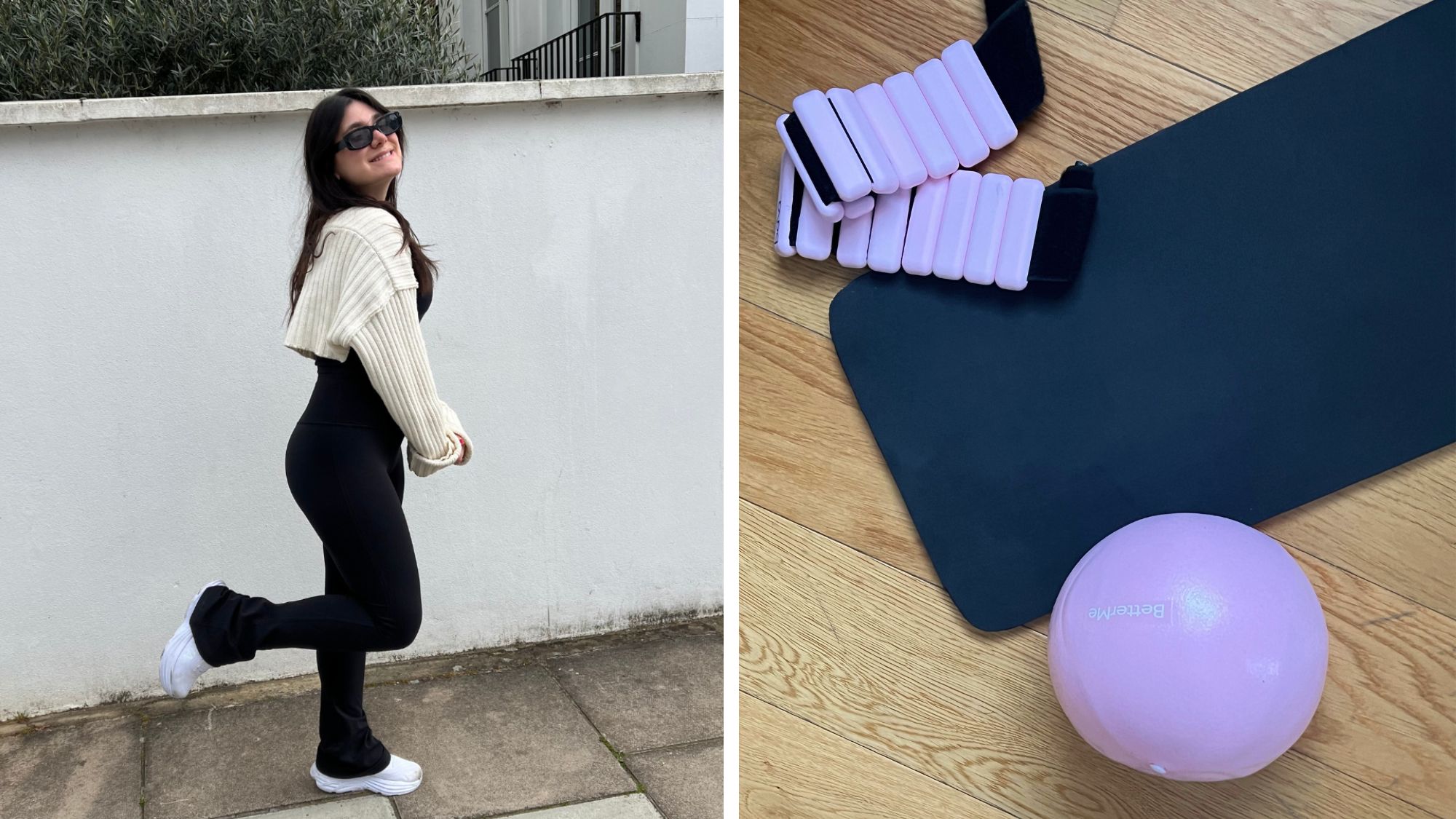

When Health Editor Ally Head asked me to write a Pilates ball review, I jumped at the chance. I've seen review after review on TikTok where Pilates fanatics rave about how great Pilates balls are and, as someone who already religiously does at least four Pilates workouts a week, I was keen to mix my workouts up a bit. Any tools that will support my practice get a yes from me (I'm looking at you, Pilates sliders and celeb-approved Bala Bangles), and next on my list were the handy balls.
Wondering how such a small bit of kit can have such an impact? That's the beauty of Pilates workouts, really - seemingly small moves can have a mighty impact, toning and strengthening your muscles. Balls are particularly effective as they're an affordable, easy-to-use and multi-faceted tool. Use them in the right way and they're absolutely great at helping you build core strength and glute muscle, too.
Not just that, Pilates balls are an excellent way to challenge your balance and stability from home, with studies showing that they activate your core muscles during workouts. In addition, Pilates balls can enhance flexibility and muscle endurance, giving them a leg up on other types of fitness equipment that only target one part of the body. Like the sound of engaged core muscles, enhanced stability and better coordination? Us too.
To see how I got on testing them for three weeks, plus an expert's take, keep scrolling. Do give these PT-approved 20 minute Pilates workouts and 30 minute Pilates workouts a go, if you're keen to try, as well as scroll our expert guides to what Pilates does to your body and Pilates for beginners, while you're at it.
My honest Pilates balls review after three weeks of testing
What are Pilates balls?
Contrary to a large exercise ball, which is commonly used for balance-based workouts, bouncing for core strength, or even as a birthing ball, a Pilates ball is smaller. Don't underestimate them, though - they may be small, but they can be mighty in power. "The versatility of Pilates balls means they can be incorporated into a wide array of Pilates moves. For starters, basic abdominal crunches on the ball can be more effective than on the floor, due to the increased range of motion and the need to stabilize oneself," says Kristina Rihanoff, a senior yoga teacher who works across both Pilates and yoga.
Bottom line: The balls are seriously versatile and can be used for various different exercises to help target different muscle groups. While they're most commonly used for core and glute workouts, they're a bit of an all-rounder.
What are the benefits of using Pilates balls?
Great question. Veronique Ellis, founder of Evolve Pilates, rates small Pilates balls as they are lightweight, portable, and relatively inexpensive compared to other fitness equipment.
Celebrity news, beauty, fashion advice, and fascinating features, delivered straight to your inbox!
"This makes them accessible for home workouts, travel, or use in group fitness classes. They are great for elevating any workout, especially when travelling or are short on time and still want to get an effective full-body workout in," she comments.
Ellis highlights other benefits of the piece of kit as:
- Enhanced muscle engagement during exercises: Pilates balls add both a stability and resistance challenge during exercises.
- Improved balance, coordination, and flexibility: Again, by challenging smaller muscle groups, you'll reap a whole lot of physical and mental rewards.
- Better workout retention: By increasing the variety and creativity in your workouts - in other words, keeping them fun - you're sure to stay both engaged and progressing
- Improved form: Pilates balls can help alleviate pressure on your spine during spinal articulation exercises and help you maintain the correct form.
Folkard also recommends using Pilates balls as a rehabilitation prop post-workout to support the body in areas you cannot reach when stretching easily or postnatally to help relax and contract the pelvic floor. "Other than the physical benefits, the ball can also be used to object the eye line and follow during a workout, which can encourage good posture, deeper stretches and increased concentration," she says.
What workouts can you use Pilates balls for?
Now that we've discussed Pilates balls and their benefits, it's time to get an idea of what exercises they can actually be used for. Short answer: as these are small workout tools made to support your practice, there is very little they can't be used for. Additionally, there are also plenty of specialised exercises that require the use of Pilates balls to fully target those key muscle groups.
I spoke to Grace Hurry, Pilates instructor, who outlined five easy key at-home workouts for me to incorporate into my workout routine during the next three weeks.
- Squats: Place the ball between your knees to fire up the inner thighs.
- Narrow squat: Place the ball under your heels to challenge your balance, and also facilitate a deeper range of movement.
- Deep core activation: Lying on your back, place the ball under your pelvis whilst doing "dead bug" variations. Focus on keeping the pelvis very still and the core will fire up nicely.
- Upper back release: Lying on your back, place the ball between your shoulder blades. Arc your spine back over the shape of the ball for a beautiful stretch. For bonus abdominal work, you can also lift up into an ab curl between stretch reps.
- Reverse knee stretch: Start on all fours with the ball under your knees. Round the spine into a cat stretch and pull the ball towards your wrists. This exercise is taken from the Pilates reformer repertoire and is the ultimate full body challenge.
A post shared by Coach Kel (@fitbycoachkel)
A photo posted by on
I tried Pilates balls for three weeks - my honest review
Week one
I'm someone who really enjoys a home workout - I love the flexibility of rolling out my mat and sticking on a quick 20-minute Pilates home workout routine on YouTube. With that in mind, this is precisely what I did on week one.
I opted for this quick standing workout which offered plenty of expert guidance from the instructor to ensure I was using correct form during my first workout with a Pilates ball. I enlisted my trusty BetterMe soft Pilates ball - I found it a great, high-quality option that was both durable and soft.
The workout was easy to follow and also just the right amount of challenging. As the experts I talked to mentioned, I expected the ball to make my workout more challenging. What I didn't expect, though, was for it to enhance my focus so much - I really had to concentrate on the task at hand, engaging my balancing abilities and core muscles far more than usual. Essentially, the Pilates ball served as a reminder to ensure I was doing the workout with correct form, in turn making sure I got the most from the session.
After a couple of sessions, I felt confident in my ability to use a Pilates ball. It did take a few workouts, though - it might sound easy, but holding a round object during your workouts isn't an easy feat. With that in mind, if you're a beginner, I'd recommend allowing yourself a couple of sessions to practice feeling secure with the Pilates ball before incorporating more challenging workout combinations.
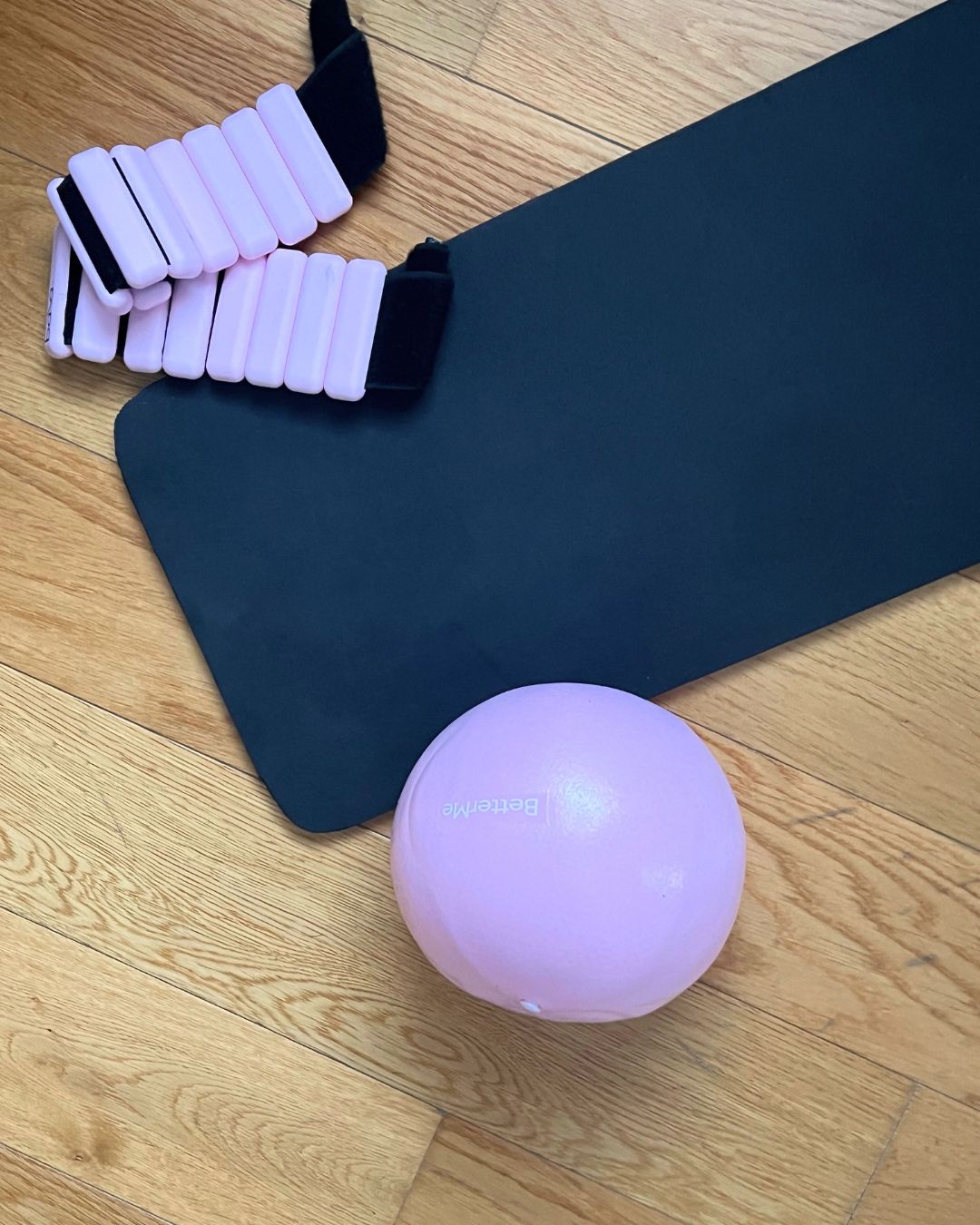
The Pilates ball Sofia tested for this Pilates ball review
Weeks two and three
In week two, I started incorporating Hurry's suggested exercise. My favourite move was the narrow squat as while doing it, I could really feel how effectively the Pilates ball engaged certain muscle groups. Spoiler alert: I liked the move so much that I actually incorporated it into all of my lower body workouts that week.
Testing a few other Pilates ball YouTube workouts, I was surprised at how engaged my glute and upper leg muscles felt - I'd never quite felt a burn like it (in a good way). While I did have slight DOMs in the following days, I could feel myself getting more powerful and felt able to incorporate more reps into my sessions without feeling the same level of fatigue.
Come week three and I'm a convert. While it was challenging to ensure I maintained good form, I reaped some substantial benefits from doing so and from utilising the workout tool. Towards the end of the week, I felt stronger, more flexible, and like I'd improved my balance, too. I tested the ball over both standing and mat workouts and found it great for taking both styles of sweat session up a notch. Most importantly, my lower body felt stronger than it had felt at the beginning of my Pilates ball challenge. As someone who has always taken pride in my lower body strength, I was very pleasantly surprised to see benefits from another (more affordable) workout tool other than your standard weights, like dumbbells or kettlebells.
Will I continue using Pilates balls?
Big yes. Over the past three weeks, I felt very proud of the improvement Pilates balls brought to my overall form. From a more balanced centre of gravity when doing standing Pilates to more easily engaged glute muscles, I'm a fan.
When starting my testing process, I was sure I'd would notice improvements in my core activation and overall balance. That said, I had no idea the incredible improvements I would notice when performing lower body and targeted glute Pilates sessions, many of which I've only been able to achieve before through heavy-weight training.
Overall, Pilates balls are incredible tools that come in different variations and price points depending on your current fitness level and end goal. The inflatable tools are durable, easy to transport, and great ways to challenge yourself and your practice - always a plus in my eyes.
Shop MC UK approved kit now:
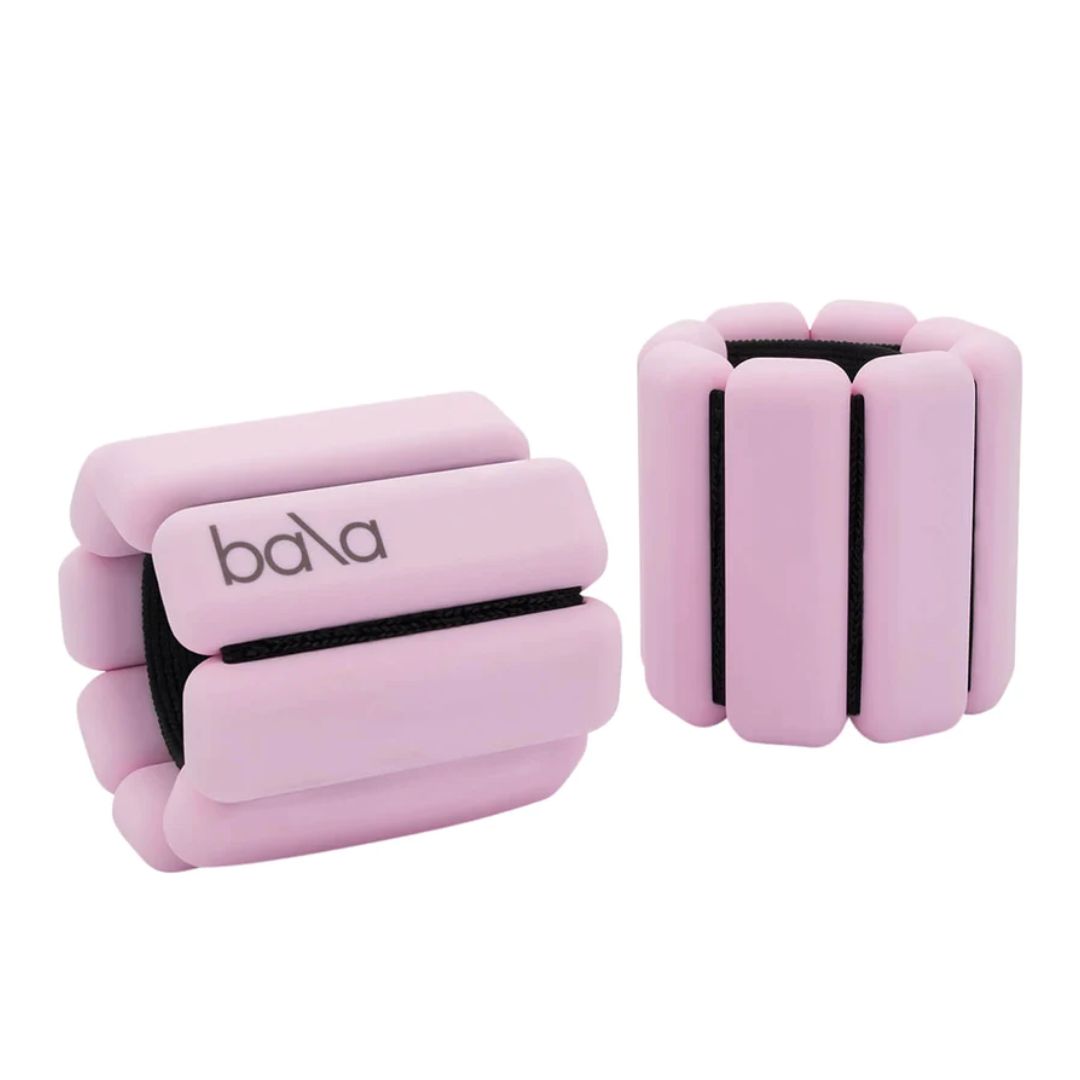
I'm a big fan of ankle weights - so much so, I wrote an entire Bala Bangles review. These nifty weights are an investment, but, as with Pilates balls, promise to take your workouts up a notch and engage key muscle groups.

Sofia Piza is the Fashion Writer at Marie Claire UK. With extensive experience and a degree in Fashion Journalism, she covers runway trends, shopping picks, celebrity fashion, and industry news.
Throughout her career, Sofia's work has ranged from in-depth interviews with industry experts and high-profile celebrities to creative production for editorial cover shoots and red-carpet coverage. Born in Mexico and raised in five countries, Sofia's multicultural upbringing has fed into her interest in international markets, leading her fashion week coverage across London, Milan, Paris, New York, and Copenhagen.
When she's not sourcing inspiration from social media, you will find Sofia anywhere from a local vintage market to busy central London streets, people watching to make sure she brings you the latest trends, from the best denim pieces to the must-have investment bags- the possibilities are endless.
